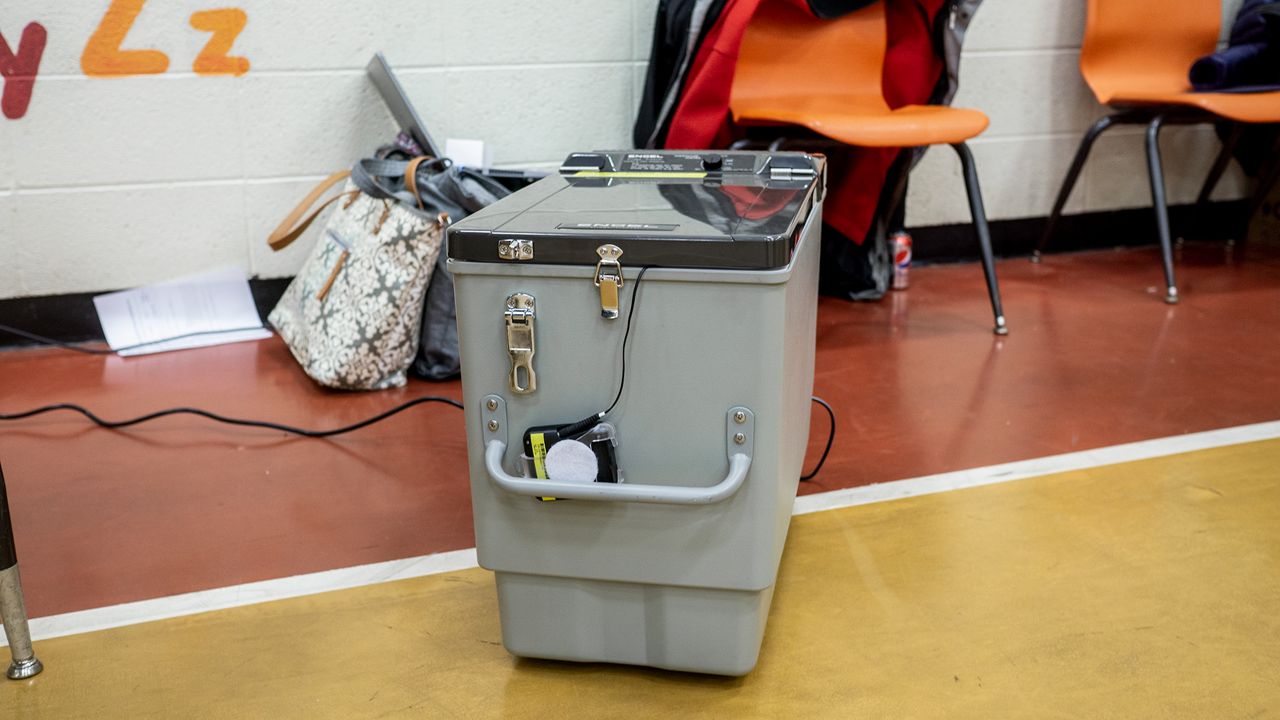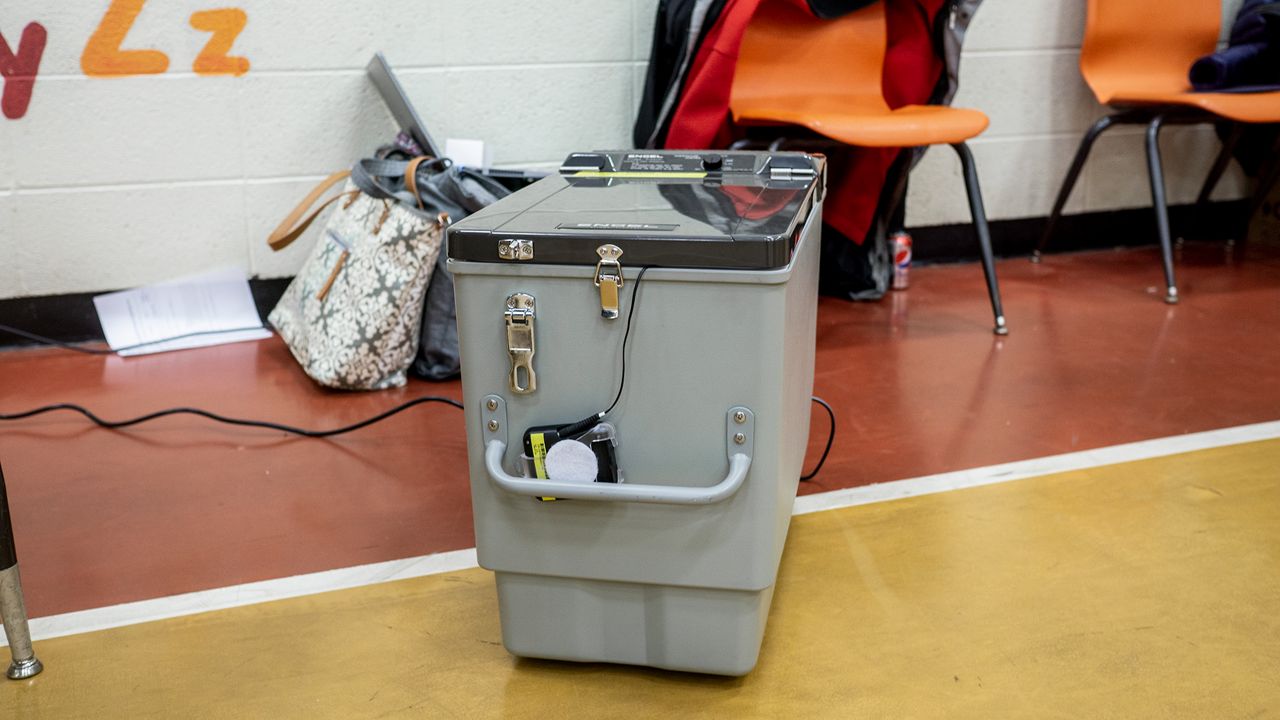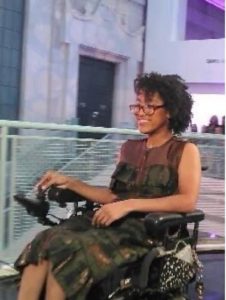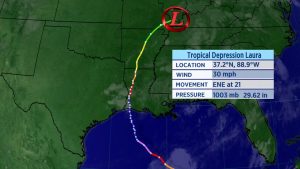LANCASTER, Ohio — With her heart conditions and developmental disabilities, Kelly McCafferty, 52, hasn’t been able to see her boyfriend since Valentine’s Day, and she yearns to dance with him again.
Ten months since lockdown, McCafferty, whose conditions qualified her to be vaccinated in Phase 1B Friday, said she finally has hope.
She was eligible for a shot of the Moderna vaccine through the Fairfield County Board of Developmental Disabilities, which last week began vaccinating residents who have both a developmental disability and an underlying medical condition.
Disability boards in all the state’s counties were tasked with coordinating vaccines for this limited group of medically vulnerable Ohioans. Vaccination clinic have been set up by children’s hospitals for these residents. In some counties, local health departments are administering the vaccines.
Now, just a few weeks away from having the full protection of the Moderna vaccine, she is starting to think about getting her social life back, spending more time with friends and family she hasn’t been able to see. “I’m going out!” she said. As soon as she can, McCafferty said she is going to Texas Roadhouse for a filet mignon.
While McCafferty has kept busy in quarantine doing what she loves — reading and writing — she said the hardest part of the pandemic has been the separation from her boyfriend, Donald Henderson, who is her date to the indefinitely postponed monthly dances at the Lancaster YMCA, she said.
They talk on the phone, but it’s hard being apart for so long.
“I miss him and we all miss each other, and we just want to be together, but ain’t happening right now,” she said.
Ohio’s Department of Developmental Disabilities provided a list of eligible residents to the county development disabilities offices. The Fairfield County board is individually calling each person on their list, and so far, the uptake has been about 60%, officials said.
According to John Pekar, Superintendent of the Fairfield County Board of Developmental Disabilities, medically vulnerable Ohioans with developmental disabilities have lost opportunities to participate in day programs, the loss of the social contributing to feelings of loneliness.
“People with developmental disabilities with underlying medical conditions are not only more prone to get COVID, but also have a higher death rate from COVID when they do contract it. We’ve unfortunately seen several deaths in Fairfield County in the past year,” he said.
McCafferty doesnt want to take any chances with the virus. When her case worker called to discuss vaccination, she was in.
“I heard there’s a lot of people in the hospital right now that have it. I’m totally scared of it,” she said.
The group of medically vulnerable residents eligible for vaccines was narrowed earlier in the month due to the slower than expected pace of vaccine supply, officials said.

About 104 people received the Moderna vaccine, which was stored in the pictured refrigerator. (Pete Grieve / Spectrum News)
Until Feb. 15, vaccines are open only to residents with “severe congenital, developmental, or early-onset medical disorders and who have a developmental or intellectual disability,” according to the Ohio Department of Health.
The state’s list of medical conditions includes: Cerebral palsy, spina figida, severe congenital heart disease, severe type 1 diabetes (hospitalized in past year), inherited metabolic disorders, severe neurological disorders, severe genetic disorders, severe lung disease (hospitalized in past year), sickle cell anemia, alpha and beta thalassemia, and solid organ transplants.
People who have any of these conditions, and do not have an intellectual or developmental disabilities, will be eligible to receive the vaccine in mid-February. In all, there are about 70,000 residents under 65 who will be eligible for vaccinations due to medical conditions in Phase “1B,” according to state officials.
The board in Fairfield vaccinated about 120 people in Phase 1A of vaccinations. In 1A, the eligible group was defined as two or more people who have disabilities who live together, which included group homes and congregate settings, as well as private living arrangements and households, county officials said.
On Friday, Fairfield immunized 104 people in Phase 1B, and one more clinic was scheduled for Feb. 5 with about 50 more people registered.
According to Stephanie Fyffe, Director of Nursing at the Fairfield Department of Health, medically vulnerable Ohioans are carefully monitored for adverse reactions.
“With this population, anaphylaxis isn’t necessarily the concern,” she said. “If someone has immune disorders they might have a bit stronger reaction or side effects, but it’s your typical side effects. Aside from soreness and redness, what people are typically reporting is headache, muscle ache, and chills.”
Pekar said some individuals in this eligibility group are their own guardians, and they make the choice whether or not to get vaccinated. Others have legal guardians appointed for them, in which case it is the guardian’s choice whether the individual gets vaccinated. People with disabilities have the same right to make a choice about vaccines as everyone else, he said.
“In many cases, the individual and their guardian have a chat together,” he said. “There are some family situations where there’s a guardian in place, and they may all talk together. In other cases, the guardian may make the decision on their own.”
He said there has been misinformation regarding the state’s mission, and allegations that residents with disabilities are being immunized as “guinea pigs,” which he says couldn’t be further from the reality.
Pekar said individual support coordinators, who each have a caseload of individuals with developmental disabilities, are responsible for communicating information about the vaccine to eligible residents and their guardians to inform the decision.
For some residents, case workers use stories with pictures to communicate about the vaccines even to people who have difficulty reading.
“We’re offering it to those people who want it. Obviously, it’s our feeling that it makes sense for the community and it makes sense for everybody’s health that they choose to get it, but they are certainly not being forced to get it,” he said.




